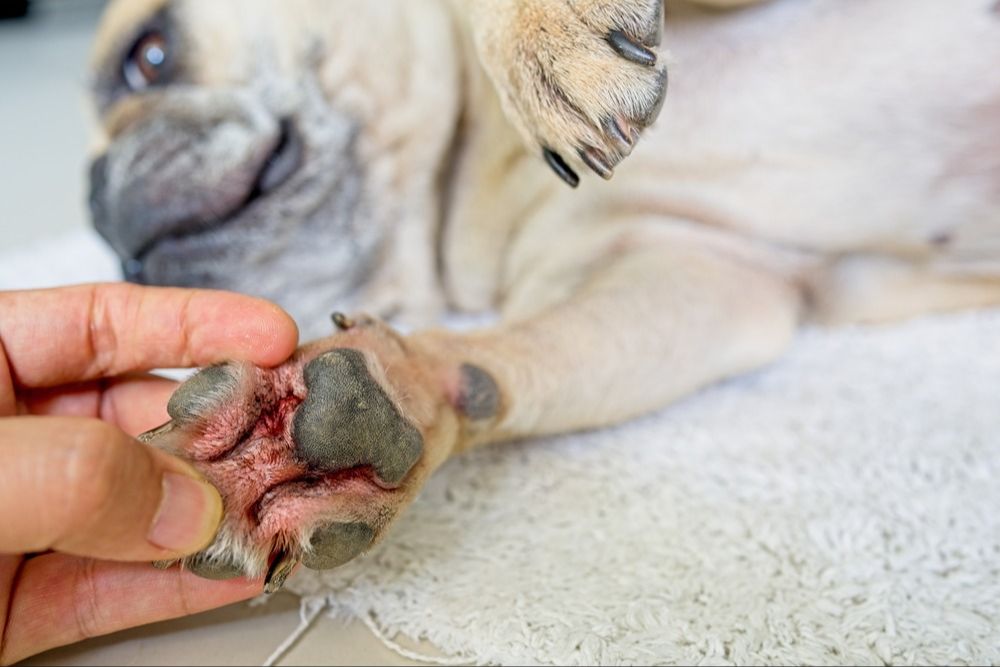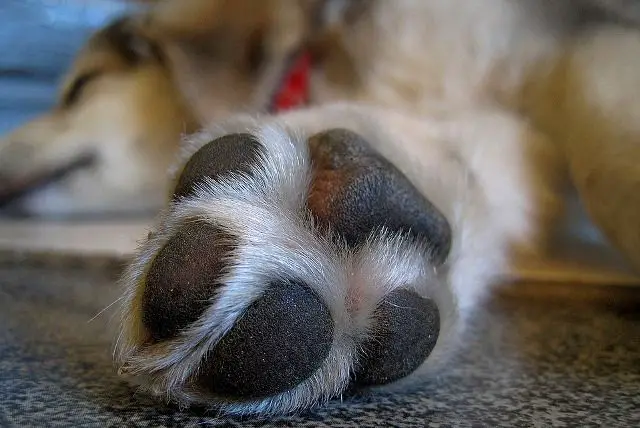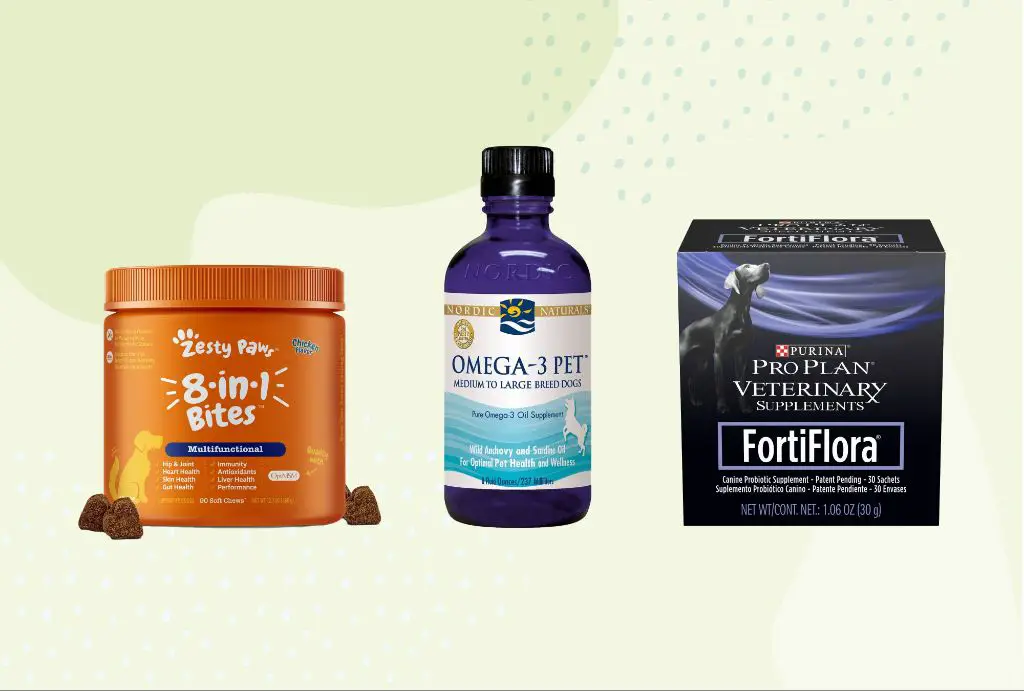Introduction
Taking proper care of your dog’s paws is extremely important. Their paws are in direct contact with the ground whenever they walk, run or play outside. This constant friction against surfaces like concrete, asphalt and hard-packed dirt can lead to rough, cracked, and painful paws if preventative measures aren’t taken.
Some common causes of rough paws in dogs are:
- Walking on hot pavement or sand in summer
- Exposure to snow, ice and salt in winter
- Excessive exercise on rough terrain like trails or gravel
- Allergies or skin conditions
Left untreated, rough paws can progress to more severe issues like bleeding, infections or limping. By learning proper care techniques, providing nutrition support, and safeguarding their paws, you can keep your dog comfortable and safe.
Signs of Rough Paws
There are several signs that indicate your dog may have rough or irritated paws. These include:

- Cracked pads – Deep cracks or fissures in your dog’s paw pads indicate dryness and roughness.
- Bleeding – If your dog’s paws are bleeding, they are likely cracked and painful.
- Limping – If your dog is limping or favoring a paw, the pads may be too sore to walk normally.
- Licking or chewing at paws – Dogs often excessively lick or bite at irritated paws trying to soothe them.
According to Burt’s Bees Care Plus+ Paw & Nose Relieving Lotion for Dogs with Chamomile & Rosemary (https://www.amazon.com/Burts-Bees-Relieving-Chamomile-Rosemary/dp/B07488GQLD), signs of rough paws can indicate “Hot weather (and pavement), cold weather (and dry air), exposure to irritating chemicals, allergies, [or] underlying medical issues.” Pay attention to these signs to catch rough paws early.
Preventing Rough Paws

There are a few key things you can do to help prevent your dog’s paws from becoming rough and cracked:
Use booties – Booties protect your dog’s paws from hot pavement and rough terrain. They come in various sizes and materials like rubber, fabric, and leather. Make sure to find well-fitted booties and introduce them slowly with positive reinforcement. Sources: https://www.fourpaws.com/pets-101/health-and-wellness/dry-dog-paws, https://betterpet.com/dry-dog-paws-home-remedies/
Avoid hot pavement – Take walks during cooler parts of the day to avoid burns. Test pavement by placing your hand down for 10 seconds before walking your dog. Sources: https://www.preventivevet.com/dogs/how-to-properly-care-for-your-dogs-paw-pads, https://betterpet.com/dry-dog-paws-home-remedies/
Conditioning exercise – Build up the muscle and skin strength of paws gradually on various surfaces. Avoid long hikes on rough terrain until paws are conditioned. Sources: https://www.fourpaws.com/pets-101/health-and-wellness/dry-dog-paws, https://www.preventivevet.com/dogs/how-to-properly-care-for-your-dogs-paw-pads
Treating Mild Cases
For mild cases of rough paws that don’t involve cuts, abrasions, or limping, there are some simple home remedies and over-the-counter treatments that can provide relief:
Paw balms containing soothing and moisturizing ingredients like shea butter, vitamin E, and coconut oil can be gently massaged into the paws to hydrate, smooth, and protect them. Allow the balm to fully absorb before letting your dog walk on any surfaces.
Applying a small amount of petroleum jelly can act as a protective barrier against irritants. Make sure your dog doesn’t lick off the jelly.
Soaking the paws in warm water for 5-10 minutes can soften calluses and soothe mild irritation. You can add a small amount of Epsom salts to the water as well. Thoroughly dry the paws afterwards.
Treating Severe Cases

If your dog has severe cracked or injured paws that are not getting better with home treatment, it’s important to take them to the veterinarian. Signs that warrant a vet visit include:
- Deep cracks that are bleeding or oozing
- Limping or reluctance to walk
- Infection setting in, with redness, swelling, or pus
- Bandages not helping improve the condition
At the vet, they can provide professional treatment options such as:
- Medicated ointments: Prescription antibiotic or antifungal ointments that penetrate deep cracks and treat infection. These are more powerful than over-the-counter ointments.
- Bandaging: The vet may recommend specialized vet wrap or booties to protect severe cracks and allow them to heal. This prevents dirt from entering the wounds.
- Oral medication: Antibiotics or anti-inflammatories may be prescribed to treat infection or pain. These reach the entire body systemically.
With professional veterinary treatment, most cases of severe cracked paws and injuries can fully heal. However, it’s important not to delay and visit the vet promptly if home treatment isn’t working. Catching issues early prevents complications like permanent scarring or deformity of paw pads.
Caring for Injured Paws
Caring for your dog’s injured paws is very important to prevent infection and promote healing. The first step is to clean the wound by gently rinsing it with cool water or an antimicrobial wash to remove any debris or dirt (Dog Paw Care Tips and Paw Injuries Treatment). Avoid using hydrogen peroxide as this can damage healthy tissue. Pat dry the paw with a clean towel.
Next, apply a pet-safe antiseptic like chlorhexidine to disinfect the wound (First Aid for Torn or Injured Foot Pads in Dogs). You can also apply an antibiotic ointment like polysporin. This will help prevent infection and promote healing.
Gently wrap the paw with some self-adhesive bandage or gauze, being careful not to wrap too tightly. This protects the wound and keeps it clean while healing. Change the bandage daily.
Limit your dog’s activity to prevent further injury and allow the paw time to heal. Walks should be kept short and avoid rough terrain. Jogging, running and hiking should be avoided until the paw fully heals.
Nutrition for Healthy Paws

Providing proper nutrition is essential for keeping your dog’s paws healthy and preventing roughness. There are certain vitamins and nutrients that are especially beneficial for paw pad health.
Foods rich in vitamin E like sunflower or safflower oil can help moisturize paw pads and prevent cracking and dryness. Vitamin E is an antioxidant that protects skin cells from damage. According to Zinpro, vitamin E can help control inflammation in paws and maintain their integrity (https://www.zinpro.com/resource-center/blog/dog-nutritional-needs-to-help-pets-recover-faster-from-paw-pad-issues/).
Omega-3 and omega-6 fatty acids like those found in fish oil are also extremely beneficial for paw health. They help reduce inflammation and moisturize pads to prevent cracking. Products like Nutra Thrive for Dogs contain omega fatty acids targeted to help reduce paw chewing and irritation (https://ultimatepetnutrition.com/product/nutra-thrive-dog/).
Biotin is a B vitamin that supports keratin production and skin and coat health. It can help strengthen paw pads and prevent cracking. Foods like eggs, salmon, and liver are high in biotin.
Providing a nutritious diet with antioxidant vitamins, fatty acids, and biotin can help keep your dog’s paws healthy and comfortable.
Grooming
Regular grooming is key to keeping your dog’s paws healthy. Here are some tips for grooming your dog’s paws:
Trim the fur between the paw pads and around the edges of the paw with grooming scissors or clippers. Long fur can trap dirt and debris and lead to irritation. Be very careful not to nick the skin when trimming. Only trim a small amount at a time. According to the ASPCA, excessive trimming between the pads can lead to infection [1].
File your dog’s nails regularly to keep them neatly trimmed. Use a nail file or nail clippers designed for dogs. Avoid cutting too short, which risks hitting the quick and causing bleeding and pain. If your dog is resistant to having their nails trimmed, work on desensitizing them slowly with positive reinforcement training and treats.
Moisturize dry, cracked paw pads with a paw balm or coconut oil to improve paw health. Apply balm and gently massage it into the paw pads. Do this especially after walks on rough terrain or snow. Smooth paws are less prone to cuts and abrasions. Choose a product designed specifically for dogs, as human creams may contain ingredients that are unsafe if licked off.
Overall, regular gentle handling and inspection of your dog’s paws during grooming promotes their health. It builds trust and enables you to spot any issues early.
When to See the Vet
If your dog’s paws remain rough, cracked, or irritated after trying home treatments like paw balms and waxes for 1-2 weeks, it’s time to make an appointment with your veterinarian (https://www.preventivevet.com/dogs/how-to-properly-care-for-your-dogs-paw-pads). Deep cracks in your dog’s paw pads that bleed or seem infected also warrant a vet visit, even if you’ve only been treating them for a few days. Signs of an infected paw include:
- No improvement after 3-5 days of home treatment
- Deep cracks or fissures in paw pads
- Redness, swelling, or discharge around cracks
- Limping or licking paws excessively
- Loss of appetite or lethargy
Your vet can properly clean and medicate infected paw pads, provide antibiotic ointments, recommend advanced moisturizing treatments, or fit your dog with protective dog booties to allow cracked paws to heal. They can also evaluate if an underlying condition like allergies, arthritis, or vitamin deficiencies are causing chronic dry, rough paws.
Summary
Keep your dog’s paws healthy and prevent roughness with proper nutrition, grooming, and paw care. Inspect paws regularly for cracks or damage, and treat mild cases by cleaning, applying moisturizer, and protecting paws. Severe cases may require wrapping, medication, or veterinary care. Catch problems early, as paws can worsen quickly. Healthy paws allow dogs to play and exercise comfortably.
Prevention is key, through diet, conditioning walks, paw wax/balm, and avoiding hot or rough surfaces. Intervene at the first sign of roughness before paws crack or injure. An ounce of protection is worth a pound of cure. With diligent care, your dog’s paws can stay smooth and resilient.